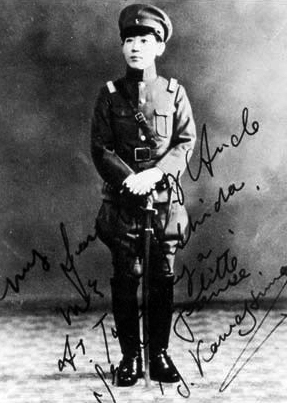
Lisa reads: The Private Papers of Eastern Jewel by Maureen Lindley
In the Private Papers of Eastern Jewel, Maureen Lindley looks at the life of a notorious Chinese princess from a forgiving angle. Eastern Jewel, also known as Yoshiko Kawashima, was considered quite scandalous in her day: a Chinese princess raised in Japan, a promiscuous young woman who wore men’s clothes, she drank and smoked opium, she spied for the Japanese and was eventually executed as a traitor. Lindley suspects that she was not inherently evil, but a product of her very peculiar upbringing and headstrong temperment. She paints a very compelling story.

She was born a Manchu princess, 14th daughter of Prince Su and a distant cousin of Emperor Pu Yi. When she was 8 years old, she was sent to live with her father’s “blood brother”, Kawashima Naniwa. She was told this was as punishment for her reckless and unladylike behavior, but it was pre-ordained — Kawashima had asked for Eastern Jewel to be sent to him two years before, because he found her to be a pretty child. So the seeds of her rebelliousness and disconnection were planted early.
Kawashima encouraged her rebelliousness, providing her with fencing lessons, allowing her to wear boys’ clothes and encouraging the deep divide between Yoshiko and the other women in the household. Her stepfather and step-grandfather played key roles in her sexual development; eventually, Kawashima — in addition to having regular sexual relations with his stepdaughter — began sending men to visit her. These were generally businessmen, military and government officials, and others that Kawashima wanted to impress or influence. Yoshiko believed he respected her modern ways, when in reality, he was using her as a royal whore.

Eventually, she was married off to a Mongolian prince, living in extremely primitive conditions. It had to be a horrible shock, going from the royal palace in Tokyo to a tent on a windswept plain, huddling with dogs for warmth. She immediately began to plot her escape and did not care who was hurt in the process. I can’t say that I blame her for that — I wouldn’t have wanted to live in those conditions, either.
Yoshiko eventually makes her way back to Japan, providing information to the Japanese government. She does her best to influence Emporer Pu Yi to favor the Japanese agenda. (She appears briefly in the movie, The Last Emperor.) She felt herself to be Japanese — not surprising, considering the way she had been treated by her Chinese family. In an era when women had few choices about their lives (or their deaths — Yoshinko’s mother, a concubine, committed ritual suicide after the death of her master), she had an opportunity to live outside of society’s norms and she took it. I have no doubt that vengeance and selfishness played their parts in her decisions, but her options were very limited.
Lindley’s narrative is full of lush detail. She provides a alternate view of a fairly reviled figure — rejected by her native and adoptive countries, Yoshiko was eventually betrayed to Chiang Kai-shek, imprisoned and executed as a traitor. I found the story quite believable, giving a strong foundation to the argument that Eastern Jewel was not an evil woman. She may have been shaped by outside forces, but she made her own decisions and had a hand in her own destiny.
Latest posts by Lisa Hura (Posts)
- Lisa reads The Undoing by Averil Dean - March 30, 2016
- Lisa reads In Wilderness by Diane Thomas - March 23, 2016
- Lisa reads Baggage by S.G. Redling - March 16, 2016
- Lisa reads Sandman Slim by Richard Kadrey - March 9, 2016
- Lisa reads Of Things Gone Astray by Janina Matthewson - June 30, 2015
 Print This Post
Print This Post




Discussion Area - Leave a Comment